- Home
- Pat Conroy
The Pat Conroy Cookbook Page 3
The Pat Conroy Cookbook Read online
Page 3
“The two dear gay men next door were the first neighbors to arrive. But the escargots did not interest them. They were transfixed by the sight of a whole bucket of male genitalia in my sink. You could not blame them. They had never seen mountain oysters, nor did they know that anyone would cook and eat them. They thought they had stumbled into the lair of the serial killer who was preying on and mutilating gay males. The snails on the walls simply added a note of horror to it all. They fled screaming down the stairs and out into the streets. The police were called. It was an affair to remember. Pat, are you burning your greens? Good; it’s sinful to burn greens. There’s always a point of no return, you know.
“Did I fix my lover dinner that night? But of course. All the commotion simply made the evening more special. I served the escargots in their own shells with garlic, butter, and parsley—after I boiled and cleaned them, of course. I fried the mountain oysters, and they were superb. After dinner and cognac, my lover and I—ah, but that is personal, part of the night’s mystery. There are parts of some stories that should never be told. Ah. Class, take a deep breath. Dinner is almost ready. Smell it. Breathe deeply. Now. Now.”
Though Nathalie Dupree did not remember much about my presence in her class, it marked me forever. I remain her enthusiast, her evangelist, her acolyte, and her grateful student. She taught me that cooking and storytelling make the most delightful coconspirators. Either was good alone, but in communion with each other, they could rise to the level of ecstasy.
Three of Nathalie’s recipes.
MELON RING WITH MINT AND HONEY-LIME DRESSING
The last time Nathalie Dupree invited me to dinner, she met me at the front door and told me with her most theatrical flourish that she felt “worse than a rabid dog or the parakeet that the proverbial cat dragged in.” She is a woman of great entrances and exits, and said to me, “Pat, you must play the part of the gentleman and rescue this damsel in distress. You were my student, and you must cook the meal and save this night for me. If my guests realized I was about to begin projectile vomiting across the room, they’d just die.”
“I will fix the meal gladly, Nathalie,” I said, moving toward the kitchen as she moved out to the living room and the sounds of her guests in conversation. I made the meal: a standing rib roast, a simple green salad, steamed asparagus, and fresh peaches with cream and a scoop of homemade vanilla ice cream. To begin the meal, Nathalie asked, “I got a call from our good mutual friend from Atlanta, the one who’s been married six times. Do you have any theories about why all her husbands have turned out to be gay?” • SERVES 6 TO 8
2 envelopes unflavored gelatin
2 cups freshly squeezed orange juice
½ cup sugar
½ cup fresh lemon juice
¼ cup finely chopped mint leaves
1 cup melon balls (preferably a mix of cantaloupe, honeydew, and/or similar kinds), plus additional (optional)
FOR THE DRESSING
1 cup yogurt
¼ cup honey
¼ cup fresh lime juice
1. Place the gelatin, 1 cup of the orange juice, and the sugar in a small pan and heat until the gelatin and sugar are dissolved. Do not let the mixture come to a boil.
2. Remove the gelatin mixture from the heat and add the lemon juice, the remaining 1 cup orange juice, and the mint.
3. Put the pan over a bowl of ice water and stir for a few minutes until the gelatin begins to thicken. Fold in the melon balls. Pour into a 4-cup ring mold and refrigerate for at least 4 hours.
4. Unmold and fill the center with additional melon balls, if desired. To make the dressing: Mix all the ingredients together and serve with the ring and melon balls.
BAKED FISH DAUFUSKIE Nathalie baked this recipe for me in her condo in Atlanta soon after I graduated from her cooking school class. She named the dish after Daufuskie Island, where I had once taught eighteen black children in the first year of teacher integration in South Carolina. The children would often bring me gifts of deviled crab, boiled shrimp, or roasted fish their mothers sent wrapped in aluminum foil. That was the year I learned of the glory of fresh fish. “That fish was swimming yesterday evening, Mr. Conroy” Sallie Ann Robinson told me after giving me a piece of sea bass her mother had baked. Thirty-three years later, that same Sallie Ann Robinson would write her own cook book, Gullah Home Cooking the Daufuskie Way, which was published in 2003 by the University of North Carolina Press. • SERVES 4
4 grouper fillets or other firm-fleshed white fish such as red snapper, sea bass, or mahimahi
1 medium red onion, sliced
½ cup mayonnaise
2 tablespoons Dijon mustard
1 tablespoon fresh lemon juice
Paprika
1. Preheat oven to 350°F.
2. Put the grouper fillets in a greased baking dish and cover with sliced onion. Combine the mayonnaise, mustard, and lemon juice in a small bowl and spoon the mixture over the fish and onion. Sprinkle the top with paprika. Bake for 10 minutes per inch of thickness. Finish under the broiler for a couple of minutes to brown.
WHITE CHOCOLATE-PISTACHIO COOKIES • MAKES 50
2¼ cups all-purpose flour
1 teaspoon baking soda
½ teaspoon salt
½ pound (2 sticks) unsalted butter, softened
1 cup light brown sugar
½ cup granulated sugar
2 large eggs
1 teaspoon vanilla extract
1 cup white chocolate chips
1 cup chopped unsalted pistachios
1. Preheat oven to 350°F. Sift the flour, baking soda, and salt together.
2. In the bowl of an electric mixer, beat the butter and sugars until fluffy. Add the eggs and vanilla and blend well. Carefully add the flour mixture until well blended. Stir in chocolate and nuts by hand.
3. Drop the dough by teaspoonfuls onto an ungreased cookie sheet 2 inches apart. Bake for 10 to 15 minutes, until lightly browned. Allow to cool slightly on the sheet before removing to a wire rack to cool completely. Store in an airtight container.
When I first began cooking, I had no idea that it would lead me to a forking path of minor literature that would provide me with as much reading joy as F. Scott Fitzgerald. Because I began with the astringent, no-nonsense Monsieur Escoffier, who seemed to know all things about all foods and did not suffer fools easily, it took me a long time to ease out of his authoritative embrace. In the kitchen, Escoffier is every bit as intimidating as Marcel Proust is at the writing table. What surprised me was how much pure delight I took in reading recipes I could never even think about fixing myself.
I began collecting cookbooks in a modest, desultory way. But cooking is an insidious addiction and it was many years before I realized I needed to enroll in a twelve-step program to control my passion for the ownership of cookbooks. I suffered a heart-stopping pang of pure envy when I first gazed at Nathalie Dupree’s awesome cookbook collection, which sat in proud, soldierly rows in her kitchen. In Nathalie’s library of food, the recipes of the entire world seemed to be jockeying for position. You could cook anything if you just owned enough of those secret-bearing texts. The sauces and salsas and sugos of the world awaited my inspection and edification if I was bold enough to purchase a serious number of these bright, ebullient books.
My beginnings were modest. After Escoffier, I started by gathering small collections of Junior League and church cookbooks from around the South. They pleased me greatly because they were such accurate reflections of their cities and towns, as authentic as fingerprints. For me, they were also compendiums of acquired wisdom and experience that offered shortcuts that I could not learn in a lifetime. One of my first purchases was a book whose title I loved, Talk About Good!, published by the Service League of Lafayette, Louisiana. It marked the first time I was exposed to the very usable and useful tips that experienced cooks share with one another.
1. Use as little water as possible when cooking vegetables. Avoid violent boiling of most vegetable
s.
2. Always add hot water, not cold, to vegetables when cooking to keep the vegetables from being tough.
A cookbook gathered by the residents of my own Fripp Island is literally chock-full of these invaluable hints that seem part folk wisdom and part residue of the observant eye all cooks develop over the course of a lifetime spent at the stove. Though I don’t know why I love the authority and pungency of these kitchen aids, love them I do. Fripp Islanders supply these snappy advisories:
1. A dampened paper towel or terry cloth brushed downward on a cob of corn will remove every strand of corn silk.
2. Catsup will flow out of the bottle evenly if you first insert a drinking straw, push it to the bottom of the bottle, then remove.
You would not learn such things from the cookbooks of Julia Child, Wolfgang Puck, or Daniel Boulud, and this is not meant to be a critique of these inimitable chefs. These compilations of tips are a form of generosity and I cherish them particularly because of their anonymity. In all the small-time cookbooks I own, these clues to make your time in the kitchen richer and more efficient are never signed by their authors. They are simply proffered, bouquets tossed out to the strangers who would follow after them.
Another pleasure of the small-town or small-organization cookbook is the recipe author’s personal commentary on the dish at hand. It can be as simple as “One way to a man’s heart,” or “The longer you keep it, the better it gets.” But I look for the secret writers and dreamers who describe the special merits of their favorite snacks or meals. One such is the helpful Mrs. Arnold Rankin, who placed her recipe for Hot Sherry Cheese Dip in Cotton Country, a book put out by the Decatur Junior Service League in Alabama. She gives her recipe these sterling accolades: “a working girl’s best friend, a bit of magic for the busy mother, a modern miracle for the I-hate-to-cook lady. There are few things this good that are really instant. This is!” That exclamation point made me a lifetime admirer of the perky Mrs. Rankin.
In the same charming cookbook, the admirable Mrs. William A. Sims composed this metaphysical advertisement for her Sweet and Sour Meatballs recipe: “The men at your party will gather like bees at a hive around your chafing dish of meatballs.” The aristocratic and confident Mrs. Barrett Shelton Sr. touted her Stuffed Country Ham with this riff from her culinary trumpet: “To call this merely ‘Stuffed Ham’ is an injustice. ‘Spectacular’ is the only word to describe this ham: spectacular in appearance and taste. Trouble—perhaps—but for a buffet dinner or cocktail party mainliner, nothing could do more for your reputation as a good cook or hostess.” Have you ever seen three sentences more confidently rendered by a hand so fine and sure—the disdainful dashes surrounding that intimidating “perhaps” and that bold, two-eyed colon stopping you in midstream for emphasis. A small history of the South could be composed just by studying the cadences and assuredness of position in Mrs. Barrett Shelton Sr.’s place in Decatur society. It would be paradisiacal for me to pass down a Decatur street and have the imperious Mrs. Shelton whisper to a group of lunching friends, “Mr. Conroy’s new in town, but I think he has the makings of a cocktail party mainliner.”
Marian Hornsby Bowditch, the unforgettable mother of the unforgettable John Bowditch, a classmate of mine at The Citadel, wrote one of the most remarkable cookbooks I have in my possession. The entire book is written in Mrs. Bowditch’s own handwriting. The recipes are free-ranging, eclectic, and brilliant. She wrote the book and dedicated it to her “four traveling gourmet sons who have called me collect from all parts of the country for recipes.” It is a book of consummate genius. Every recipe seems complete and perfect unto itself—you cannot think of a single ingredient to add or subtract. The recipes were years in the composing and I have no doubt that Mrs. Bowditch is one of the finest chefs in this country. Her cookbook, From the Kitchen at Hornsby House in Yorktown, Virginia, is as much a treasure in its own way as Charleston Receipts or the early James Beard. As willful and opinionated as Escoffier himself, Mrs. Bowditch dispenses advice and precise instructions. Does she have tips? This larger-than-life woman brims over with personality, and conversation is an art form with her. Mrs. Bowditch tells you:
1. Put an oyster shell in the teakettle to prevent its becoming encrusted with lime. (How in God’s name did she come up with this?)
2. Store mushrooms and string beans in a brown paper bag in the refrigerator, not in plastic.
These secrets of the trade are what I love best about those modest books that spring from the collective unconscious of churches, schools, clubs, and homes. They are bound economically and most of them are clasped together with plastic ringlets that give them the look and feel of an amateur’s obsession. When I wanted to write this homage to this unpraised genre I pulled, at random, Come and Get It!, a cookbook put out by the Junior Welfare League of Talladega, Alabama; Bayou Cuisine, published by St. Stephen’s Episcopal Church in Indianola, Mississippi; and a dozen others. All are unpretentious, helpful, calming to the soul, and causing great joy to the human palate.
The only book I did not own that I quoted from was Cotton Country, the one from which I cheerfully quoted the ladies of Decatur, Alabama, extolling the virtues of their own recipes. A young woman named Margaret Holly who did research for me during the writing of Beach Music is from Decatur. I called to see if she knew those ladies I was quoting with such relish. Margaret not only knew them, she knew them exceedingly well and told me the inside scoop on the three women I had quoted. Then Margaret shocked me by proving once again that the world is closing in on itself, and that the South is the smallest geographic entity on earth.
“Pat, it’s nice that you think those ladies wrote the witty little commentaries, but none of them can write that well.”
“Who wrote them?”
“My mother wrote every one of them,” Margaret said. “No, she had trouble with the cookies and someone else had to do those.”
In the front of the book, I looked up the cookbook committee who compiled the book. At the bottom of the page I saw this notation: “Recipe Commentary—Mrs. William E. Shinn, Jr., the mother of Margaret Holly.” It is one of the simple pleasures of my life that I read these unknown cookbooks, but there are certain times—like this one—when they offer me a glimpse into the magical, the purely enchanted.
COCKTAIL PECANS It is a lucky yard that hosts a pecan tree. There are several things better than a pecan pie, but not many. There are several things better than roasted, salted, and buttered pecans, but not by much. In my youth I would irritate my mother by pronouncing this as pee-can, which she considered redneck, and she would correct me with puh-cahn, which she thought more genteel. • MAKES 1 POUND
1 cup sugar
¾ teaspoon freshly ground nutmeg
¾ teaspoon cumin
¾ teaspoon freshly ground black pepper
¾ teaspoon cayenne pepper
1 teaspoon coarse or kosher salt
2 large egg whites
1 pound pecan halves
1. Preheat the oven to 325°F.
2. In a small bowl, stir together the sugar, nutmeg, cumin, black pepper, cayenne, and salt.
3. In another, larger bowl, whisk the egg whites until barely frothy. Add the nuts to the egg whites and turn to coat. Pour the sugar and spice mixture over the pecans and stir to coat.
4. Spread the pecans on a baking sheet and place in oven until browned, about 1 hour. Stir occasionally to prevent clumping.
5. Place the baking sheet on a rack to cool. Transfer the room-temperature nuts to an airtight container.
Warm and crisp the nuts in a preheated 350°F oven for 10 minutes before serving, if desired.
SMITHFIELD HAM SPREAD In the South, the Smithfield ham sets the gold standard. For me, I thought the word “Smithfield” was a synonym for excellence. After the funeral of a friend in Atlanta, I heard a guest boast, “There are four hams on the table. All Smithfield. That’s how much people thought about her.” • MAKES 2½ CUPS
2 cups diced Smithfiel
d ham
½ cup mayonnaise
1 tablespoon sweet pickle relish
Coarsely ground black pepper
Thick slices country bread
1. Place the diced ham in the bowl of a food processor fitted with a metal blade and pulse until ham is roughly chopped. Add the mayonnaise and process until the ham mixture comes together. Add the sweet relish and black pepper and pulse several times to incorporate. Transfer from processor to a mixing bowl using a rubber spatula and stir the spread (with an under-and-over motion) to make sure the relish is evenly distributed.
2. Cover and refrigerate until ready to use. To serve, bring the spread to room temperature. Spread on thick slices of country bread and cut into small squares.
BENNE WAFERS
from Charleston Receipts (collected by the Junior League of Charleston, 1950) • MAKES SEVERAL DOZEN
2 cups all-purpose flour
1 teaspoon salt, plus additional

 A Lowcountry Heart: Reflections on a Writing Life
A Lowcountry Heart: Reflections on a Writing Life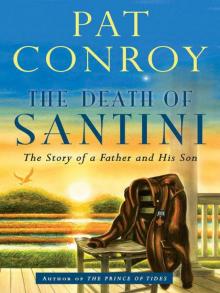 The Death of Santini: The Story of a Father and His Son
The Death of Santini: The Story of a Father and His Son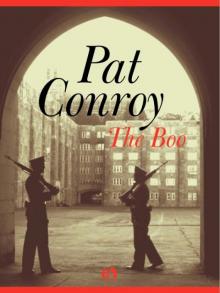 The Boo
The Boo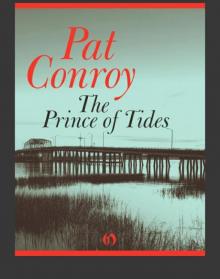 The Prince of Tides
The Prince of Tides Beach Music
Beach Music The Water Is Wide
The Water Is Wide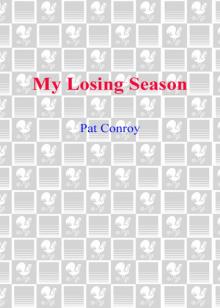 My Losing Season
My Losing Season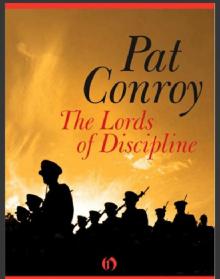 The Lords of Discipline
The Lords of Discipline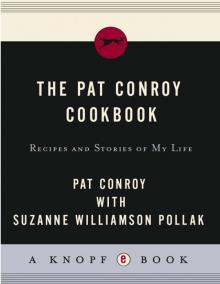 Pat Conroy Cookbook
Pat Conroy Cookbook My Reading Life
My Reading Life My Exaggerated Life
My Exaggerated Life The Pat Conroy Cookbook
The Pat Conroy Cookbook A Lowcountry Heart
A Lowcountry Heart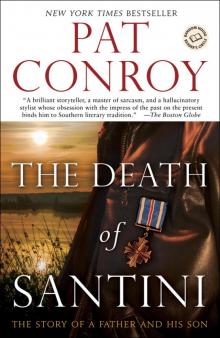 The Death of Santini
The Death of Santini